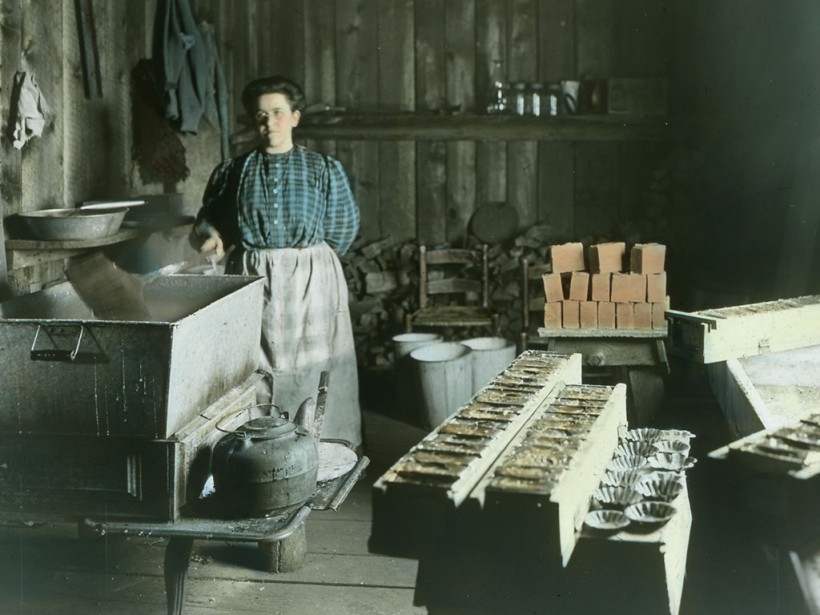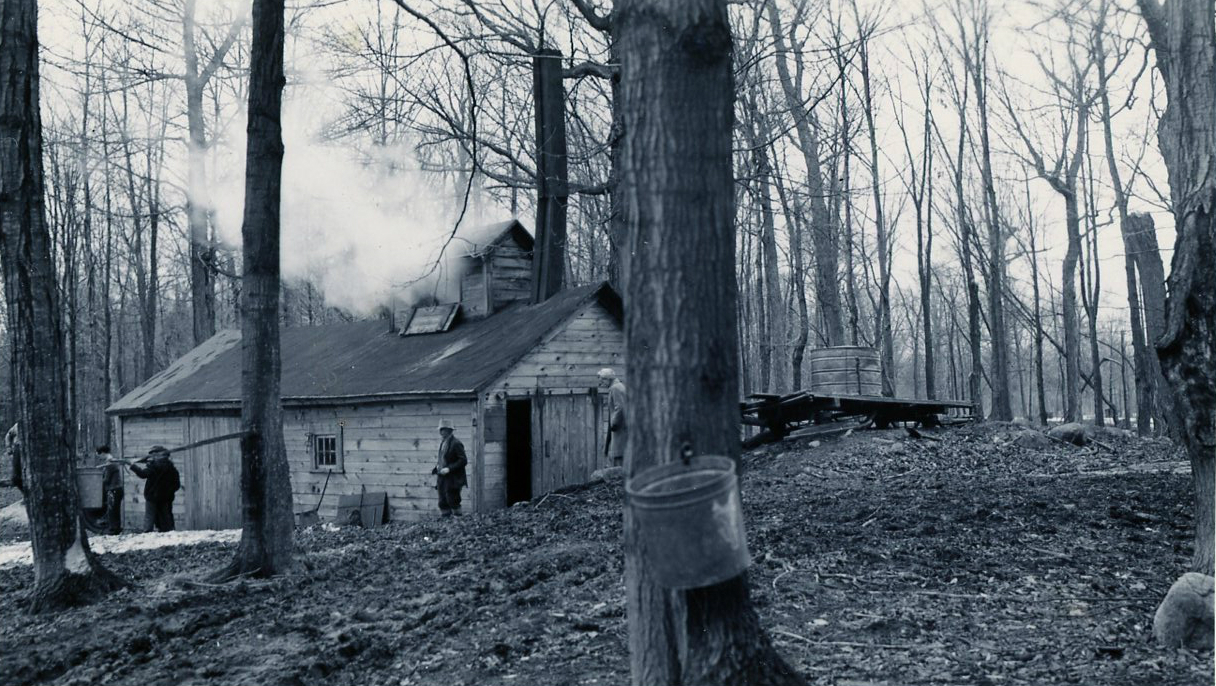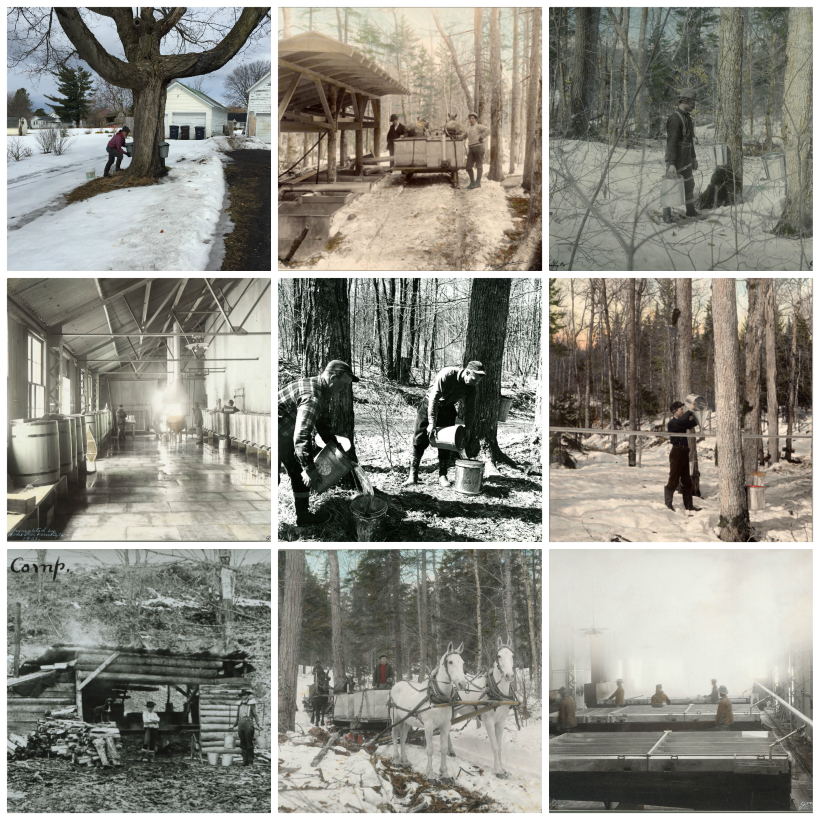150 years of maple sugaring in the North Country
A North Country spring is sure to include a few different things: slushy, melting snow, the return of migrating flocks, and of course, the sight of silver buckets hung on Maple trees. Chances are if you’re not boiling a few vats of syrup yourself, you have a good friend or neighbor who does. Everyone has their own special “supplier”. And while technology seems to be changing everything, most folks stick to the classics when it it comes to making syrup – taps, buckets, and a lot of time spent tending a fire.
That’s what I noticed while collecting photos of people working in the Adirondack North Country for NCPR’s project North Country at Work. It didn’t matter where (be it the St. Lawrence Valley or the southern Adirondacks) or when (be it 1900 or 1970) the maple sugaring was going on – everyone does it the same, though the materials used for equipment vary. Check out the buckets as they go from wood to shiny metal to dull silver to white plastic.
Here’s a look back at maple sugaring through the ages in our region.
Mid 1800s

“American Forest Scene: Maple Sugaring,” toned lithograph with applied watercolor. Artist: Arthur Fitzwilliam Tait, 1856. Printed and published by Nathaniel Currier. From St. Lawrence University archives.
Early 1900s

Maple sugaring evaporator in 1900. Donated by Helen Rogers. Photo courtesy of the Adirondack Museum.

Woods scene of several men transferring maple sap from buckets into large collecting vats on horse-drawn sledges. Horse Shoe Forestry Company in Tupper Lake, 1901.” Photographer is G.W. Baldwin. Photo courtesy of the Adirondack Museum.

View of the interior of one of the Horse Shoe Forestry Company’s 4 sugar houses. Shows five men tending the patent evaporator pans developed by John Rivet and James Hill and patented for them by Low. Horse Shoe Forestry Co. in Tupper Lake, 1901.” Photo: G.W. Baldwin

Sugar Camp in North Creek, 1907. Donated by William Waddell. Photo courtesy of the Adirondack Museum.

Woman making maple sugar in a cabin near Lowville, NY, 1911. She is surrounded by vats, molds, and cakes of sugar. Photo: Colored instructional lantern slide (detail) via New York State Archives.
Mid 1900s

Two men transferring sap from collecting buckets to other buckets. Photograph by James Fynmore, circa 1965. Photo courtesy of the Adirondack Museum.

Man with a gas powered drill mounted to a Backpack. He is drilling taps for to collect sap for maple sugaring. Photograph by James Fynmore, circa 1965. Photo courtesy of the Adirondack Museum.

Maple sugar house and sugar operation. Two men stand beside a large sap vat on a flatbed trailer being towed by two horses. Photograph by James Fynmore, circa 1965. Photo courtesy of the Adirondack Museum.

Man collecting sap for transportation back to the sugar house, near 141 Flower Ave. Watertown, NY. Photo courtesy of Jefferson County Historical Society. Circa mid-20th century.

Maple sugar house in operation near 141 Flower Ave. Watertown, NY. Photo courtesy of Jefferson County Historical Society. Circa mid-20th century.
Today

Michael Greer collecting sap from one of the many properties he uses in his sugaring operation in Potsdam. Photo taken by Richard Blackburn.












